The script potential score of American Graffiti is 0.64, a blockbuster (predicted 67-81MM; actual 115MM)
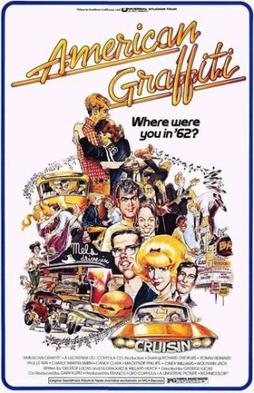
- The script of American Graffiti will appeal to 18.18 – 22.22% of the population
- American Graffiti borrows 96% of its events from 6 mythological tales
The script of American Graffiti will appeal to 18.18 – 22.22% of the population
Any story is the quest to fulfil a human desire. We have identified universal quests for every human desire. These universal quests reveal the invisible plot structure of stories. An analysis of Blockbuster, Hit & Flop plots led to the discovery of Mythosis Code. The Code reveals the story principles shared by all Blockbusters. We use the Code to estimate and unlock a story’s Blockbuster potential.
- All Blockbusters have at least 3 universal quests. American Graffiti uses 6 mythological tales to capture the desires of Curiosity, Power, Preservation, Acceptance & Accumulation. It uses 2 universal quests of Curiosity. Every basic human desire has a fulfilled & an unfulfilled quest.
- In Blockbusters, each universal quest is mirrored by ONLY ONE character. Curt mirrors the unfulfilled universal quest of Curiosity & Steve mirrors the quest of Accumulation. Terry mirrors the fulfilled quest of Curiosity, John mirrors the quest of Preservation, Falfa mirrors Power & Carol mirrors Acceptance.
- Every Blockbuster character borrows at least 35% of the universal quest. Curt borrows 33% of the quest for Curiosity. Steve borrows 52% of the quest for Accumulation & Terry borrows 48% of the fulfilled quest of Curiosity. John’s character borrows 31% of the universal quest of Preservation. Carol borrows 32% of the quest of Acceptance & Falfa borrows 16% of the quest of Power.
- Blockbusters interweave different quests to create a tight plot structure. Interweaving occurs when events of 2 quests occur simultaneously in the story. Blockbusters have a quest interweaving threshold of 0.5. American Graffiti’s quest interweaving is 0.3 which is below par. An example of interweaving the quests of John & Carol:

- Blockbusters have a script score of at least 0.64 whereas American Graffiti’ script potential score is 0.64. Based on the script score we estimate that the movie will appeal to 18.18 – 22.22 % of the population.
Even though the plot structure of American Graffiti uses 6 universal quests it is loose since the quests aren’t well interwoven.
96% events in American Graffiti are borrowed from 6 mythological tales
At Mythosis, we have identified 32 mythological tales. Each mythological tale uniquely represents a human quest to fulfil a desire. These tales are the super set of thousands of tales across cultures.
We have codified the events of each mythological tale. Every tale has 5 major arcs. Each arc has a sequence of events. These events culminate into a major event. Here is the mapping of each character’s quest to the major events in their respective mythological tale.
Quest 1: Curt mirrors 33% of Eve’s quest for Curiosity (marginally below threshold)
Curt’s desire for Curiosity stems from the need to explore. The tale of Eve from Abrahamic mythology is the universal unfulfilled quest for Curiosity.
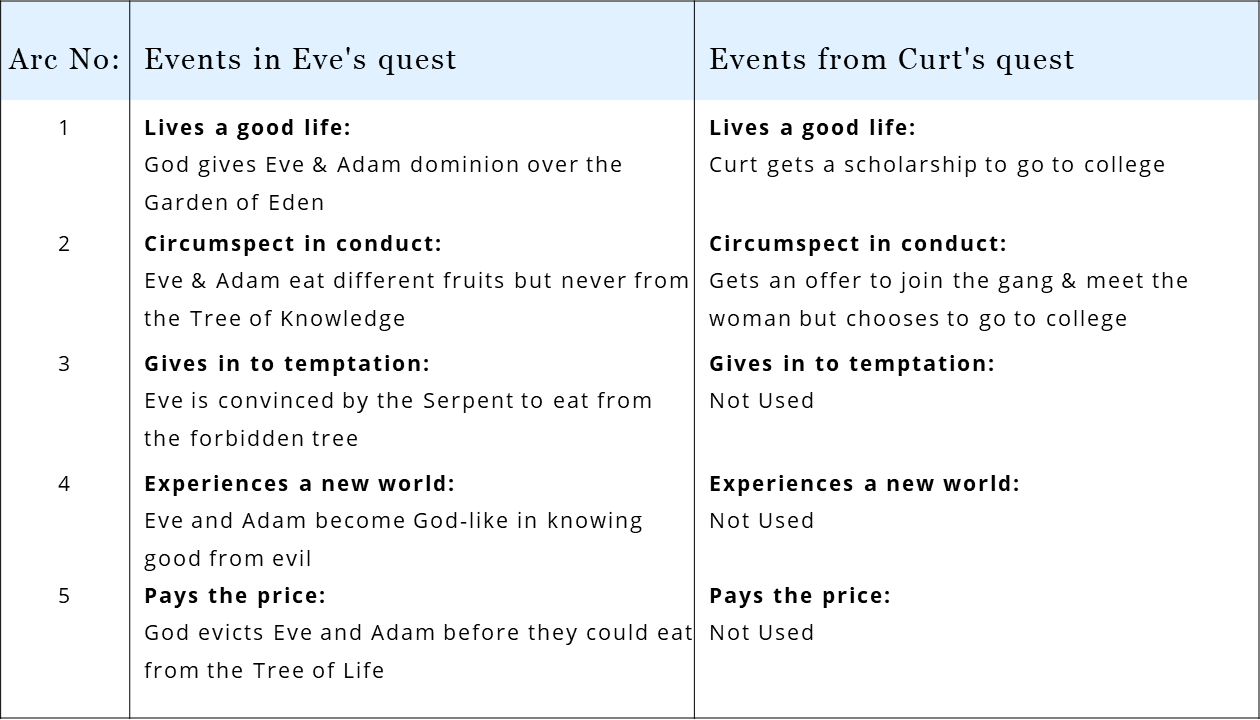
Quest 2: Steve mirrors 52% of Valmiki’s quest for Accumulation (above threshold of 35%)
Steve’s desire for Accumulation stems from the need to collect & own. The tale of Valmiki from Hindu mythology has a robust expression in Dicken’s character of Scrooge which is the unfulfilled universal quest for Accumulation.
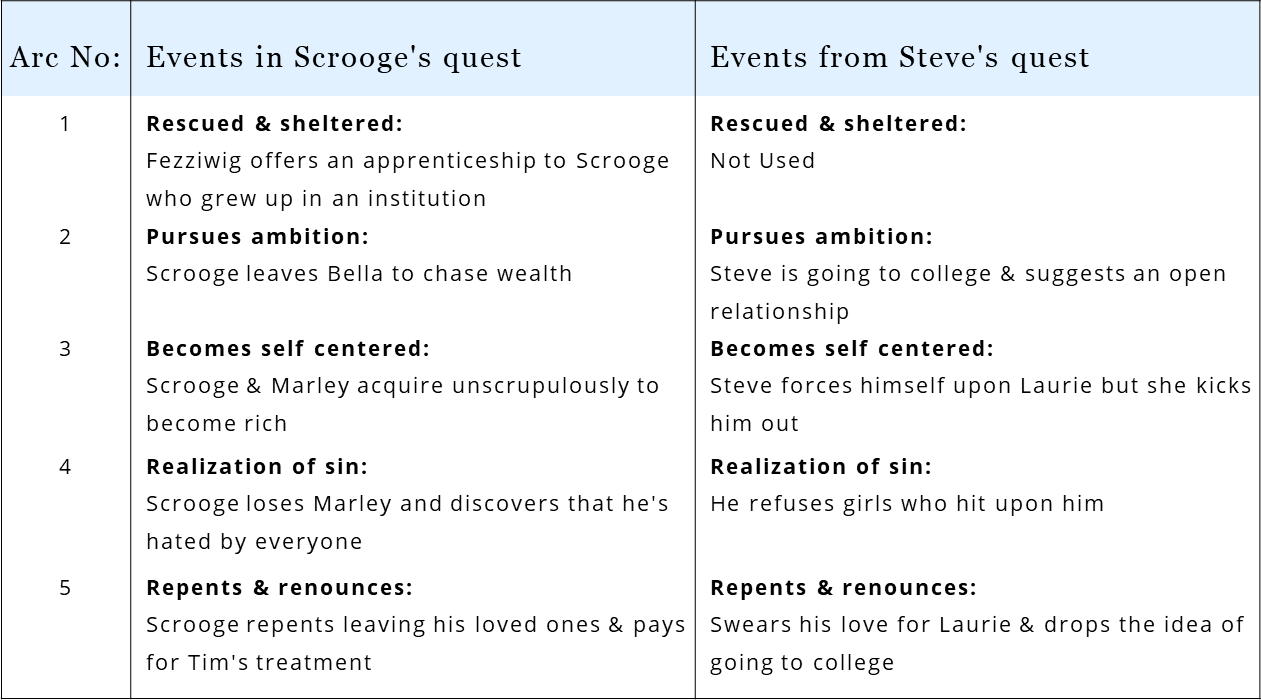
Quest 3: Terry mirrors 48% of Innana’s quest for Curiosity (above threshold of 35%)
Terry’s desire for Curiosity stems from the need to explore. The tale of Innana from Sumerian mythology is the universal fulfilled quest for Curiosity.
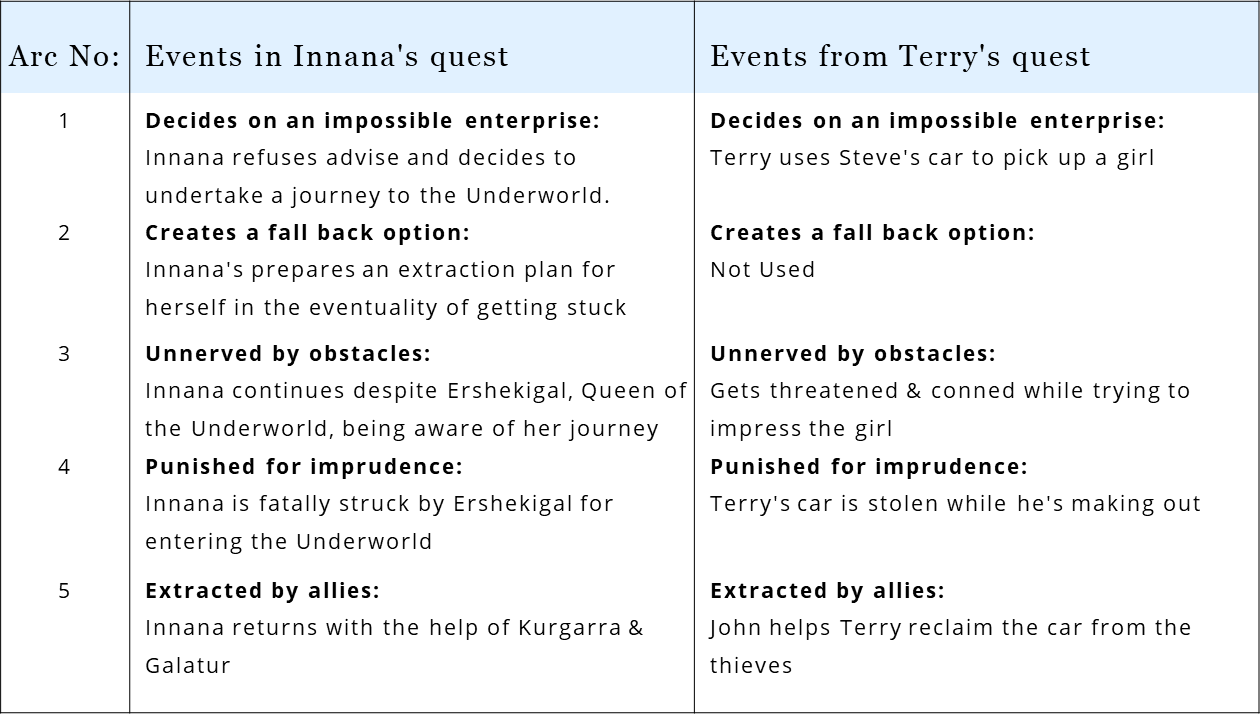
Quest 4: John mirrors 31% of Noah’s quest for Preservation (marginally below threshold)
John’s desire for Preservation stems from the need to survive a threat. The tale of Noah from Abrahamic mythology is the universal quest for Preservation.
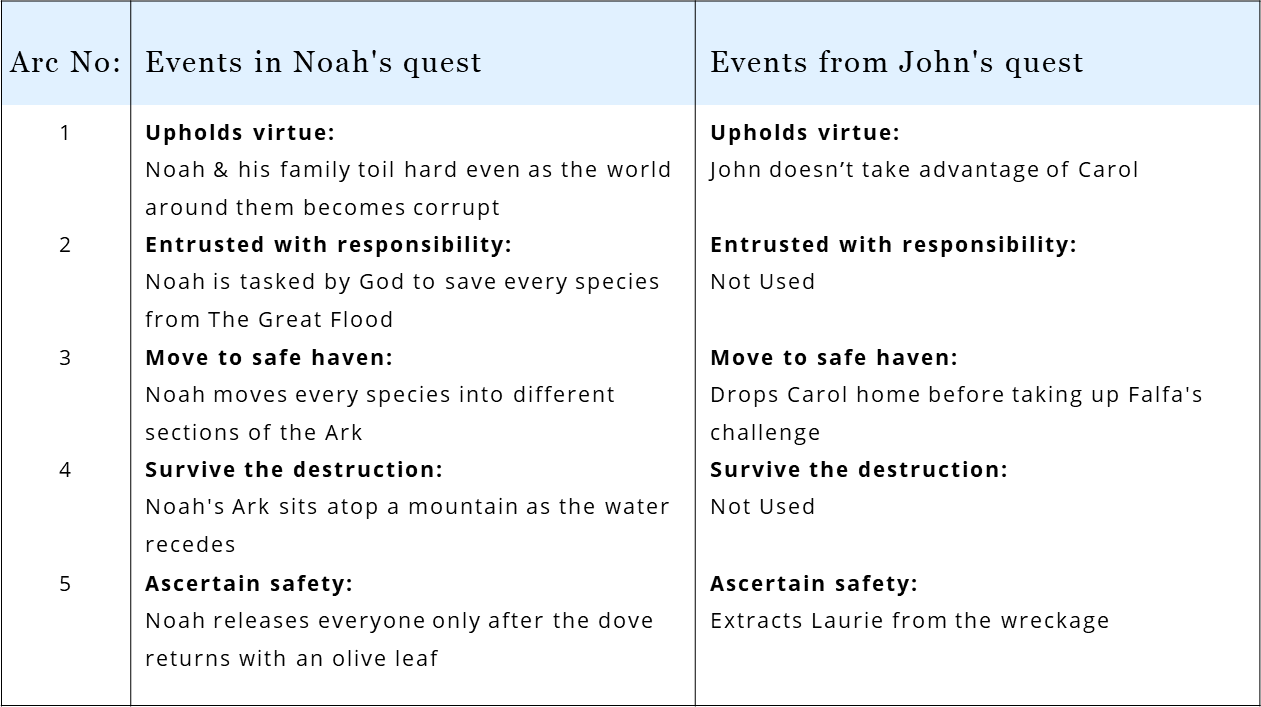
Quest 5: Carol mirrors 32% of Karn’s quest for Acceptance (marginally below threshold)
Carol's desire for Acceptance stems from the need for approval from others. The tale of Karn from Hindu mythology is the universal quest for Acceptance.
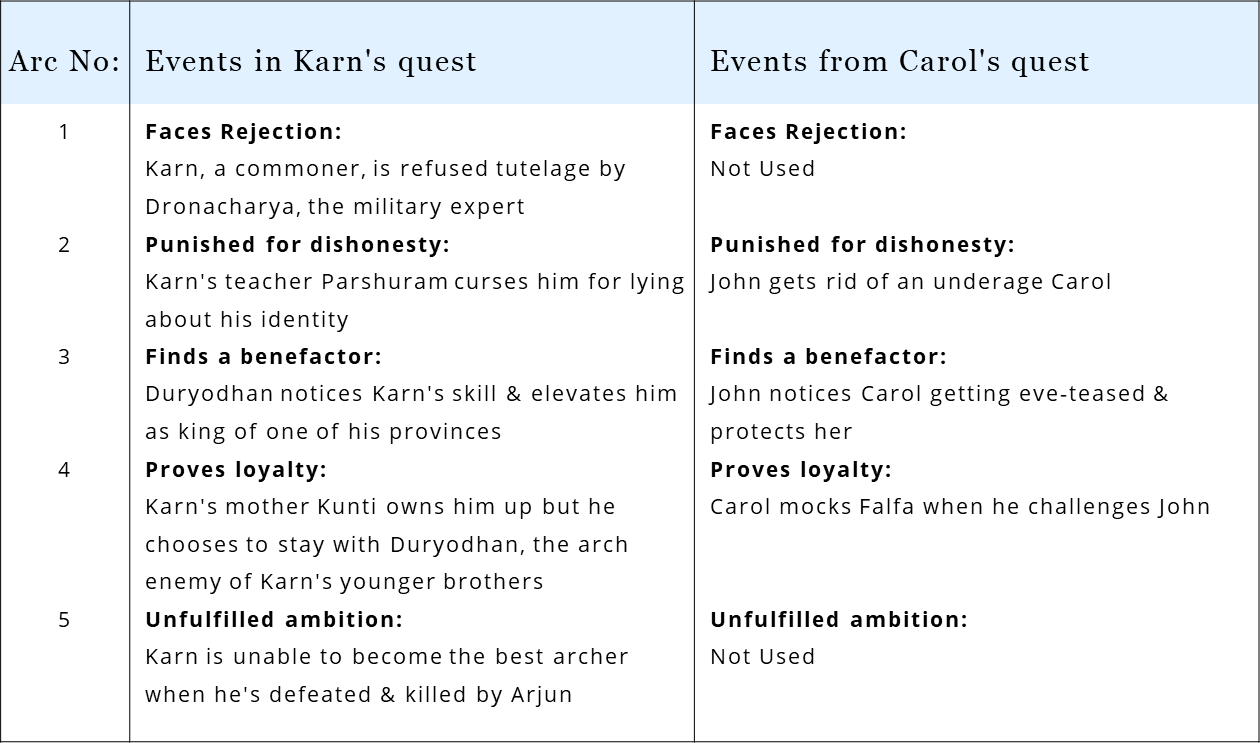
Quest 6: Falfa mirrors 16% of Ravan’s quest for Power (below the threshold of 35%)
Falfa’s desire for Power stems from the need to dominate others. The tale of Ravan from Hindu mythology is the universal quest for Power.
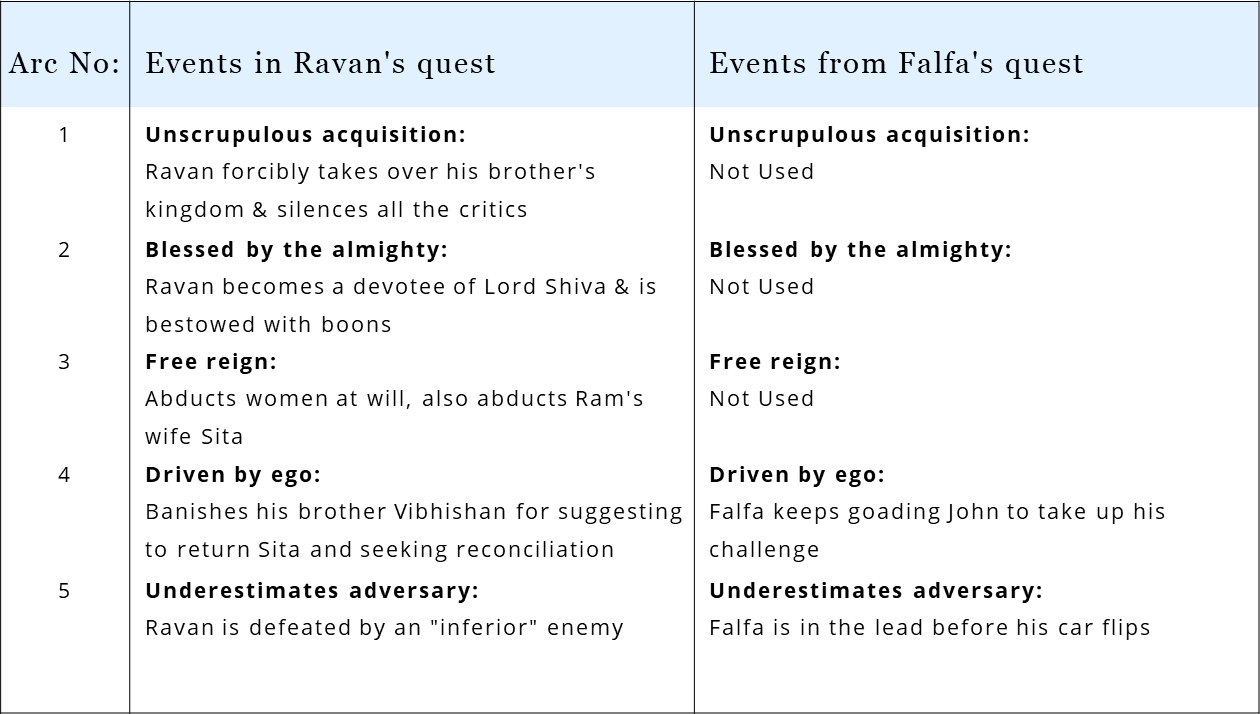
- Tags: 1973, Acceptance, Accumulation, Box office, Character development, Curiosity, Eve, George Lucas, Innana, Karn, Lucasfilm Ltd., Movie Review, Mythology, Noah, Power, Preservation, Ravan, Script, Story plot, The Coppola Company, Universal Pictures, Valmiki
